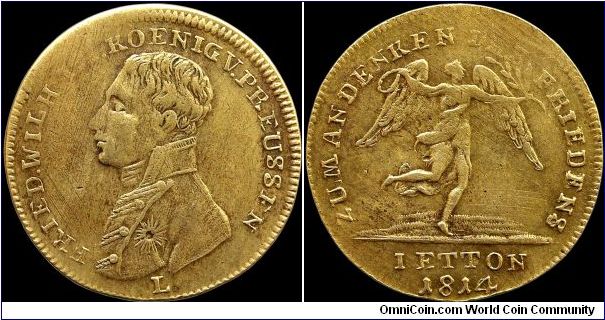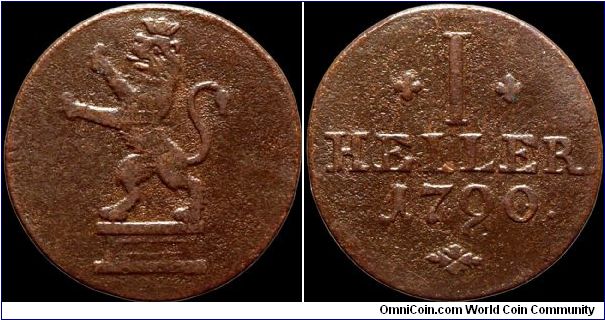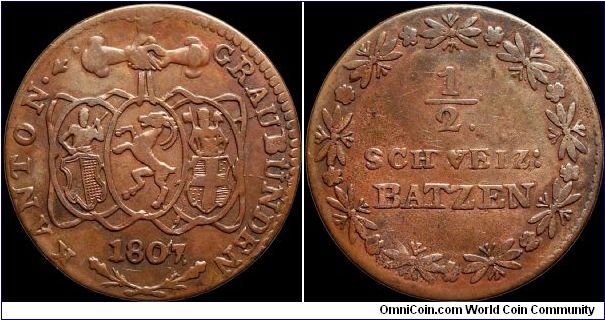-
Posts
3,697 -
Joined
-
Last visited
Content Type
Profiles
Forums
Gallery
Events
Articles
Posts posted by elverno
-
-
elverno; 2005 10 Yuan, China; Group 8: NCLT
http://omnicoin.com/coins/917056.jpg
Though it's really bullion of course it does sport a date and value.
-
elverno; 1967 Centennial Quarter, Canada; Group 6 1901-2000
http://omnicoin.com/coins/900736.jpg
I accidentally caused the toning you see by wrapping it in paper towels and storing it in a plastic box for 30+ years.
elverno; 1960 50 fils, Kuwait; Group 6 1901-2000
http://omnicoin.com/coins/899770.jpg
It didn't get all that far last time but maybe this time around...
elverno; 1961 1 Franc, West African States; Group 6 1901-2000
-
elverno;1809 Loge des Sept Ecossais réunis, France.;Group 9: Exonumia
http://omnicoin.com/coins/898251.jpg
Another rare Masonic medal from the collection of Prince Victor Napoleon, known as Napoleon V.
It is described as follows:
"Obverse, Within a ring formed by a serpent, having its tail in its mouth, a cross patee gules, surmounted by a smaller cross bottone argent. Legend, SEPT ECOSSAIS REUNIS O.*. DE PARIS.
Reverse, The square and compasses, enclosing a star of seven points bearing the letter G. Between the points are flames ; around the star are figures in the following order, beginning at the top, under the head of the compasses, 7, 5, 3, 1, 6, 4, 2, which are placed on the inner edge of a glory of sixteen points, surrounding the star, and the rays of which are surmounted by the square and compasses. Legend, LA DOUCE ET CONFIANTE AMITE LES UNIT 5809. [sweet and trusting friendship unites them.J Copper silvered. Size 19. This Lodge was instituted February 4, 1809."
Obviously it was also produced in copper. I bought the better part of Victor Napoleon's Masonic collection from a dealer several years ago. Individual pieces only appear every two or three years. The Reunited Seven Scotsmen produced a beautiful medal.
-
elverno;1812 Loge de l'ardente amitié de Rouen, France.;Group 9: Exonumia
http://omnicoin.com/coins/898246.jpg
All Masonic medals from the Napoleonic era qualify as RR+. This one hails from the collection of Prince Victor Napoleon, sometimes known as Napoleon V to supporters. His collection came in part from Napoleon I's personal collection but there's no indication in this pieces' provenance as to when and where to came into his collection.
Marvin's book on Masonic medals describes it as follows:
"Obverse, On the left, an altar surrounded by a garland, and having on it three burning hearts. At the foot of the altar are the square, compasses, level, and plumb. Above, on the right, a radiant triangle. In exergue, ARDENTE AMITIE O.-. DE ROUEN. in two lines.
Reverse, A leafless tree, over which an ivy vine has grown. Legend, LA MORT MEME NE L'EN A PAS SEPARE. [Death itself has not separated them.] This is an octagonal jeton, and was probably struck about 1812. Silver. Size 20."
His sizes were in sixteenths of an inch.
-
elverno;1812 12 Skilling. Denmark.;Group 5: 1801-1900
http://omnicoin.com/coins/898083.jpg
It is overstruck on a 1771 skilling and comes from a collection I acquired that only contained coins from 1812.
-
elverno;1812 3 Pfennig, Reuss—Greitz;Group 5: 1801-1900
http://omnicoin.com/coins/898413.jpg
A nice coin with some wonderful toning, some of which I got in the shot. There is evidence of die failure as well.
The Smith Collection was one I acquired where the collector only picked up coins from 1812. I couldn't afford the gold however.

-
elverno;1809 20 Kreuzer, Tyrolean Insurrection;Group 5: 1801-1900
http://omnicoin.com/coins/898062.jpg
In 1805 the Austrians and Russians got their block handed to them by Napoleon at the Battle of Austerlitz. One of the results of the subsequent treaty was that Napoleon handed the Tyrol over to the Bavarians as a prize for being on the right side of the conflict. Unfortunately no one asked the staunch Catholic region if they wanted to be ruled by a Protestant country. As early as 1806 Andreas Hofer, a local innkeeper, had been in communication with the Austrians and when war broke out again in 1809 the Tyroleans raised an insurrection. In the difficult terrain the Bavarians were pushed back on all fronts and the insurrectionists took over the mint and produced, among other coins, this 20 kreutzer.
When the Austrians were defeated again in 1809 at Wagram the Tyroleans were left to their own devices. Napoleon sent French troops and, together with Bavarian and Württemberg troops the area was again subdued. "Hofer had to flee and hide; he was betrayed, arrested and carried off to Mantua (Italy), where he was executed on February 20th 1810." In 1810 the Tyrol itself was partitioned between Bavaria, the Napoleonic Kingdom of Italy and France before being returned to Austria in 1815 by the Congress of Vienna. This is the nicest of three examples I own.
-
elverno;1796 ½ Penny Conder Token, Scotland.;Group 4: 1701-1800
http://omnicoin.com/coins/898342.jpg
Given the fact that the average citizen throughout Europe was paid in copper and that virtually everything they earned was spent immediately for food and shelter it is amazing that England functioned as the largest trade economy of the era. I say this because from 1775 until 1797 no copper coins were produced by the British government. While I've heard that was because George III thought it was undignified for his image to be on base metals that story may be something of a numismatic myth.
To fill the gap merchants produced privately issued coinage, tokens, called Conders after the author of the first catalog produced for collectors. This Scottish piece, (Lothian, Campbell's, D&H 14a) was produced for a tobacconist. Mr. Campbell was located on 37 St. Andrews Street in Edinburgh and had a previous piece from when he was up on 79 St. Andrews. The Turk was a recognized symbol for tobacconists as well as Highlanders and Negroes. The jar is a snuff jar.
-
elverno;1800 ¼ Kreutzer, Austria;Group 4: 1701-1800
http://omnicoin.com/coins/898391.jpg
The Austro-Hungarian Empire stretched across most of Europe during the Napoleonic era. This was one of the tiniest coins produced and is seldom found in this condition. Because the average person was paid in copper, fractional coins such as this allowed someone to buy a meal or some bread without carrying a tempting amount of money around. The fractional copper is almost always found nearly smooth as a result.
-
elverno;1799 ½ Scudo, Piedmont Republic.;Group 4: 1701-1800
http://omnicoin.com/coins/898027.jpg
The Piedmont Republic lasted slightly over 6 months. At the time republics were formed and gone in a drop of the hat and this is one of them. The republic managed to produce a limited amount of coinage before being swallowed into the Subalpine Republic in 1800. There is a short article in Wiki concerning this coinage. While the published mintage for this piece is 300k an expert in Italian coinage once wrote me that the silver coinage of the republic was found on the floor of the mint, swept up, melted and turned into new coinage. There had been a limited release as well as some looting and the actual mintage is probably less than 10k.
-
elverno;2001 250 Shillings, Napoleon I, Somalia; Group 8: NCLT
http://omnicoin.com/coins/897877.jpg
An oddly beautiful coin from what is now a failed state.
-
Here's one of my latest acquisitions.


I've been meaning to get one for a while, now I finally have.
Bohemond III of Antioch helmet-head denier.
+BOAMVDNVS on obverse. Star to right of bust, crescent to left.
+AMTIOCNIA on reverse. Crescent in top left quarter.
Very nice coin. Though it's hard to believe there were two more people saddled with Bohemond for a name...
-
nice!
Will there be a hologram with his arms waving?
-
I'm in. It looks like it'll work fine. I think it's important that we make note of the competition wherever we can to try to get as many people involved as possible, both as competitors and voters.
-
1814 Paix de Paris, Prussia.

27mm - Details - CCC
You would be hard pressed to find a more common jeton or medal of the Napoleonic era. This is the 5th I've collected and I doubt I've spent $20 for the 5 including shipping. Common I tell ya, not RARE!
-
LOL! But the point is; you didn't see me doing anything did you?

-
Plus when they're flat enough you don't look like you're doing perverse things to Lady Liberty...
-
-
1811 1/6 Thaler, Prussia.

25mm - Details
Pretty common, although this is my first Prussian coin from 1811.
-
1800 6 Pfennig, Schwarzburg-Rudolstadt.

16.5mm - Details - scarce
A plain, tiny silver coin. It was encased in NGC plastic when I got it where it was noted as having "XF Details / Environmental Damage". It's free to acquire more damage naturally.
-
1808 1 Dute, Napoleonic East Indies.

20.5mm - Details
Just awful. But they're tough to find in decent shape.
The initials are of the Dutch United East India Company. Louis Napoleon had just become King and out in the sticks they continued to use the dies available in 1807-08.
-
The 1804 5 Kopek is stunning! The rest are ok
 but I sort of zero in on a specific range of years.
but I sort of zero in on a specific range of years.Actually they're all wonderful.

-
1790 1 Heller, Hesse-Cassel.

19.5mm - Details
I've got nothing. Porous maybe? Sometimes I just collect something because it fills a hole.
-
1807 ½ Batzen, Canton of Graubünden, Swiss Cantons

23.5mm - Details
A relatively tough canton to get examples from. This is my first coin from Graubünden.



PCI2010 Group 8 - NCLT : Submissions
in PCI2010 Archive
Posted
elverno; 2004 50 cent, Australia; Group 8: NCLT
http://omnicoin.com/coins/916810.jpg